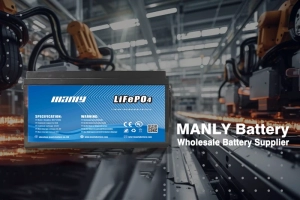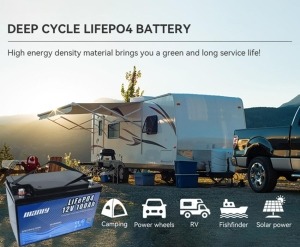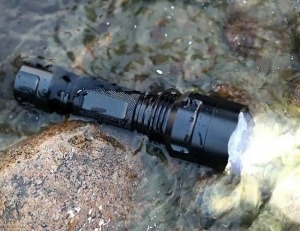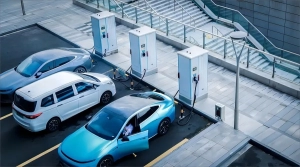How Much Does a Lithium Battery Cost in 2025
Table of Contents
- How Much Does a Lithium Battery Cost in 2025

Overview of Lithium Battery Costs
Key Cost Trends
In 2025, lithium battery costs are expected to continue their downward trajectory due to advancements in technology, material stabilization, and economies of scale. Lithium ion battery costs have seen a drastic reduction over the past decade, with electric vehicle batteries leading this trend. According to BloombergNEF, the price of a battery pack is projected to drop to $113 per kWh, making electric vehicles more affordable than ever.Key Drivers of Cost Trends:- Technological Advancements: New manufacturing processes, such as integrated cell-to-pack designs and improvements in lithium ion battery replacement chemistries like lithium iron phosphate (LFP), are reducing production costs while enhancing performance.
- Material Stabilization: Prices for key materials, such as lithium and cobalt, have normalized after peaking in 2022, contributing to lower production costs.
- Energy Efficiency Gains: Innovations in battery density allow for more power storage per unit, reducing the overall cheapest amp hour per dollar ratio for consumers.
- Electric vehicle battery costs: $4,760 to $19,200.
- Solar energy storage batteries: $6,800 to $10,700.
- Consumer electronics: As low as $10 for small devices. This diversity in pricing demonstrates the adaptability of lithium batteries across sectors, with continued cost reductions benefiting industries globally.
Role of Global Demand and Supply Chains
The cost of lithium batteries is heavily influenced by the dynamics of global demand and supply chains. In 2025, several key trends will shape these costs:- Regional Manufacturing Expansion:
- Governments in Europe and North America are investing in local lithium ion battery production facilities to reduce reliance on Asia-Pacific suppliers, which currently dominate 48.45% of the global market share. For instance, the U.S. is set to establish its first LFP battery plant in Michigan by 2026.
- Asia-Pacific Market Leadership:
- The Asia-Pacific region, particularly China and Japan, continues to lead in production capacity and innovation, benefiting from well-established supply chains and economies of scale. As of 2023, this region accounted for nearly half of the global market value, providing affordable options for electric vehicle battery costs.
- Diversification of Supply Chains:
- Companies are diversifying supply chains to mitigate risks posed by geopolitical tensions or raw material shortages. Africa is emerging as a critical supplier of raw materials like cobalt and lithium, while Europe is establishing localized production facilities to bolster supply security.
- Adoption of Cost-Effective Chemistries:
- The expiration of LFP patents in 2022 has enabled manufacturers worldwide to adopt this affordable and safe chemistry, reducing production costs. LFP batteries are expected to dominate the market due to their balance of cost and performance, particularly for electric vehicles.
- Global Sustainability Goals:
- Policies promoting renewable energy and electric vehicle adoption are driving up demand for lithium batteries. This surge in demand incentivizes innovation, resulting in cheaper, more efficient batteries.
Factors Influencing Lithium Ion Battery Costs
Manufacturing Advancements
Manufacturing processes play a pivotal role in determining lithium ion battery costs. Over 80% of a battery's cost stems from its components, with cathode materials, particularly those made of precious metals like cobalt and nickel, being the most expensive. Advancements in production techniques, such as automated assembly lines and higher yield rates, have significantly reduced costs. For instance:- High-volume production: Scaling up production reduces per-unit costs due to economies of scale.
- Efficient material utilization: Improved designs minimize waste, especially in cathode and separator layers.
- Standardized testing and certifications: Although safety certifications can range from $500 to $30,000, streamlining these processes cuts overall expenses.
Raw Material Availability and Prices
The availability and pricing of raw materials like lithium, cobalt, and nickel are major cost determinants. The recent stabilization of these material markets has contributed to lower lithium ion battery costs, particularly for electric vehicles. Key trends include:- Market stabilization: Lithium prices, which peaked in 2022, have normalized, reducing battery production costs.
- Material substitution: Chemistries such as lithium iron phosphate (LFP) use less expensive materials, lowering costs by approximately 20% compared to nickel manganese cobalt (NMC) batteries.
- Geopolitical factors: Countries are diversifying supply chains to reduce dependency on a single region, ensuring stable pricing.
Energy Storage Capacity and Efficiency
Higher energy storage capacity and efficiency often correlate with increased costs. Batteries with greater energy density require advanced chemistries, which are more expensive to manufacture. Examples include:- High-capacity applications: Electric vehicle batteries, typically ranging from 40 kWh to 100 kWh, have costs between $4,760 and $19,200.
- Tool-specific batteries: Outdoor power tool batteries range from $110 to $335, depending on amp-hour ratings, as shown below:
| Amp-Hour Rating | Average Cost |
|---|---|
| 2 – 2.5 Ah | $110 |
| 4 Ah | $141 |
| 5 – 6 Ah | $190 |
| 8 – 9 Ah | $220 |
| 10 – 12 Ah | $335 |

Environmental Regulations and Recycling Initiatives
Stricter environmental regulations are reshaping the lithium ion battery industry by emphasizing sustainability. Governments worldwide are pushing for greener manufacturing and recycling practices to reduce environmental impacts. These policies impact costs in several ways:- Recycling mandates: Facilities for extracting reusable materials like lithium and cobalt from spent batteries add upfront costs but lower long-term material expenses.
- Compliance costs: Manufacturers must meet stringent safety and environmental standards, which can increase initial production costs.
- Incentives for eco-friendly practices: Tax benefits and subsidies encourage the adoption of sustainable production techniques, partially offsetting regulatory expenses.
Lithium Battery Costs by Application
Electric Vehicle (EV) Batteries
Average Costs in 2025
Electric vehicle batteries are among the most expensive lithium ion batteries due to their size and energy requirements. In 2025, the electric vehicle battery cost is projected to range between $4,760 and $19,200, depending on vehicle type and battery capacity. For example:- Tesla battery packs typically cost $11,000 to $20,000.
- Toyota hybrid batteries are relatively cheaper, ranging from $2,000 to $8,000.
- Rivian's delivery vans equipped with LFP batteries cost approximately $13,298 for a 135 kWh pack.
Cost per Kilowatt-Hour Comparison
The cost of EV batteries has significantly declined, with the average cost per kilowatt-hour reaching $139 in 2023. By 2025, this is expected to drop further to approximately $113 per kWh, making EVs more accessible to the mass market.Solar Energy Storage Batteries
Price Trends in Residential and Commercial Use
Lithium ion batteries for solar energy storage vary greatly based on their energy capacity and efficiency. On average, residential solar batteries cost between $6,800 and $10,700, while commercial systems can cost up to $25,000. Factors influencing these costs include:- Energy density: Higher-capacity batteries come at a premium.
- Reliability: Systems with advanced cooling and safety features often cost more.
Lithium Ion Battery Costs for Golf Carts, Boats, and Robots
Lithium ion battery costs vary significantly across different applications, influenced by factors such as energy requirements, performance demands, and specific use-case conditions. Below is an overview of lithium ion battery costs for various applications:Golf Cart BatteriesGolf carts typically utilize 48V lithium ion batteries, with prices ranging from approximately $1,000 to $2,500, depending on capacity and brand. For instance, the MANLY 48V 105Ah Lithium Golf Cart Battery is available for around $1,000. Higher capacity options, such as 160Ah batteries, can cost around $1,500.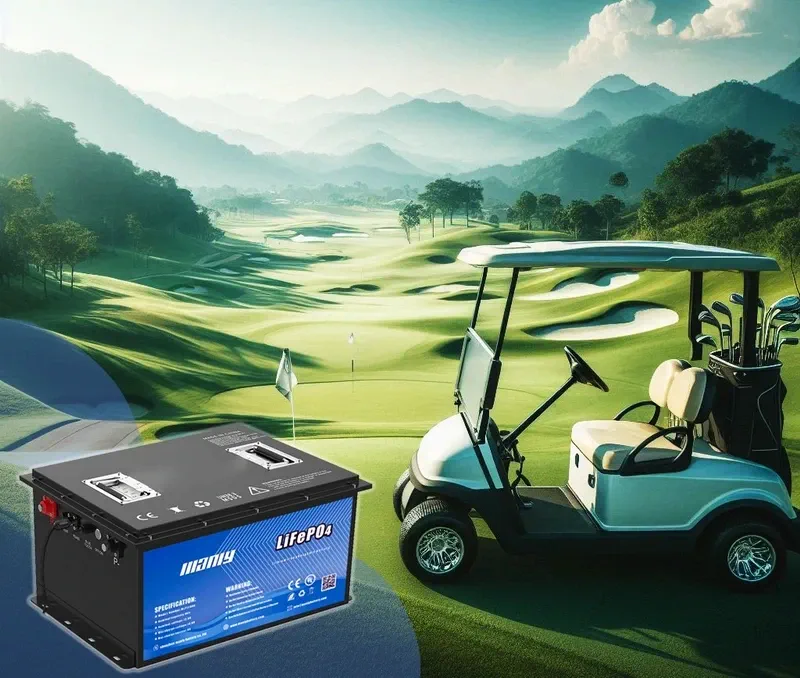 Boat BatteriesMarine applications often require deep-cycle lithium batteries to power trolling motors and onboard electronics. A common choice is the 12V 100Ah LiFePO4 battery, priced around $900. Prices can vary based on capacity and additional features like built-in battery management systems.Robot BatteriesRobotic applications demand batteries tailored to specific operational needs. For industrial robots, 48V lithium ion batteries with capacities around 100Ah are common, with prices ranging from $1,000 to $2,000, depending on customization and performance requirements. Smaller service robots may use 24V or 36V batteries, with costs varying accordingly.In summary, lithium ion battery costs are highly application-specific, with prices influenced by voltage, capacity, brand, and additional features. Investing in higher-quality batteries can offer better performance and longer lifespan, providing greater value over time.
Boat BatteriesMarine applications often require deep-cycle lithium batteries to power trolling motors and onboard electronics. A common choice is the 12V 100Ah LiFePO4 battery, priced around $900. Prices can vary based on capacity and additional features like built-in battery management systems.Robot BatteriesRobotic applications demand batteries tailored to specific operational needs. For industrial robots, 48V lithium ion batteries with capacities around 100Ah are common, with prices ranging from $1,000 to $2,000, depending on customization and performance requirements. Smaller service robots may use 24V or 36V batteries, with costs varying accordingly.In summary, lithium ion battery costs are highly application-specific, with prices influenced by voltage, capacity, brand, and additional features. Investing in higher-quality batteries can offer better performance and longer lifespan, providing greater value over time.Outdoor Power Tools and Industrial Equipment Batteries
Average Amp Hour Costs and Performance FactorsOutdoor power tools and industrial equipment utilize lithium ion batteries with varying amp-hour (Ah) ratings. The cheapest amp hour per dollar ratio typically increases with higher Ah ratings. Average costs include:| Amp Hour (Ah) | Cost Range |
|---|---|
| 2 – 2.5 Ah | $110 |
| 4 Ah | $141 |
| 8 – 9 Ah | $220 |
| 10 – 12 Ah | $335 |
Calculating the Total Cost of Ownership for Lithium Batteries
Price per kWh
The price per kilowatt-hour (kWh) is a fundamental factor in calculating the total cost of ownership (TCO) for lithium ion batteries. Currently, the average lithium ion battery cost is approximately $151 per kWh, significantly lower than in previous years due to technological advancements and increased production. While lithium ion batteries have a higher upfront cost compared to alternatives like lead-acid batteries, their superior energy density and efficiency make them more cost-effective in the long run. For instance:- A lithium ion battery for an electric vehicle can range between $4,760 and $19,200, with a per-kWh price continuing to decrease.
Expected Battery Lifespan and Replacement Frequency
Lithium ion batteries offer a significantly longer lifespan compared to traditional alternatives. On average, they can endure 1,000 to 3,000 charge cycles, depending on the quality and use case. This longevity translates to fewer replacements and lower overall costs:- Lead-acid batteries typically last for only 500 to 1,000 cycles, requiring frequent replacements, which increases TCO.
- For applications like electric vehicles or energy storage systems, lithium ion batteries often last up to 10 years, reducing the frequency and cost of battery replacements. Investing in high-quality batteries with advanced Battery Management Systems (BMS) can further enhance longevity, ensuring cost savings over time.
Recycling and Disposal Costs
Recycling and disposal represent essential components of the total ownership cost. Lithium ion batteries are more environmentally friendly than older technologies like lead-acid due to the absence of harmful substances like cadmium. However, recycling costs remain a factor:- Lithium ion battery recycling costs are typically higher, ranging from $1 to $5 per pound, depending on local regulations and recycling infrastructure.
- Efforts to improve recycling efficiency are ongoing, with several U.S.-based programs aimed at lowering these costs while promoting sustainability. The benefits of reduced environmental impact and longer lifespan often offset these recycling expenses in the broader TCO analysis.
Maintenance and Warranty Considerations
Maintenance and warranties also play critical roles in determining the TCO of a lithium ion battery. While lithium ion batteries generally require less maintenance than traditional options, regular monitoring is necessary to optimize performance and extend their lifespan:- Many manufacturers offer warranties ranging from 5 to 10 years, covering potential defects or performance issues.
- Proper storage, charging habits, and the use of protective components like Battery Management Systems (BMS) can minimize maintenance costs. These considerations help ensure that lithium ion batteries remain a cost-effective and reliable solution across various applications.
How to Choose the Best Lithium Battery in 2025
Selecting the right lithium ion battery requires balancing key technical specifications, long-term cost savings, and supplier reliability. By evaluating these factors, you can ensure optimal performance for your specific application, whether it's for electric vehicles, solar energy storage, or consumer devices.Key Specifications to Consider (Voltage, Amp Hours, and Compatibility)
When choosing a lithium ion battery, it's crucial to evaluate its specifications to meet your energy needs effectively:- Voltage: Match the battery's voltage to your device's power requirements. For instance:
- Golf carts often require 36V or 48V batteries.
- Robots may need 24V or 48V systems depending on operational demands.
- Amp Hours (Ah): This determines the battery's capacity and runtime. Applications requiring longer operation times, such as boats or energy storage systems, benefit from batteries with higher Ah ratings.
- Compatibility: Ensure the battery fits your device's physical and electrical specifications, including size, weight, and charging requirements. For example:
- Compact robots may require lighter, smaller batteries like lithium polymer designs.
- Boats or golf carts often demand rugged, high-capacity LiFePO4 batteries for durability.
Balancing Upfront Cost and Long-Term Savings
While lithium ion battery cost is higher upfront compared to traditional options like lead-acid batteries, their long-term benefits outweigh the initial investment:- Efficiency and Durability: Lithium batteries are more efficient, with lower self-discharge rates and longer lifespans. This reduces the frequency of replacements, saving costs over time.
- Energy Savings: High energy efficiency means less power loss during charging and usage. This feature is especially valuable for applications like electric vehicles, where reduced charging time leads to lower electricity bills.
- The electric vehicle battery cost averages $151 per kWh, translating to an initial investment of $4,760 to $19,200, but offers savings due to a lifespan exceeding 10 years.
Evaluating Supplier Reputation and Customer Reviews
Choosing a reliable supplier is critical to ensuring you receive a high-quality battery. Here's what to look for:- Reputation: Research suppliers known for providing certified and safe batteries. Top brands often have consistent quality and customer support.
- Customer Reviews: Evaluate feedback on performance, reliability, and warranty claims. Positive reviews on platforms like Amazon or dedicated tech forums can provide insights.
- Warranty and Support: A longer warranty period (5-10 years) reflects the manufacturer's confidence in their product and ensures better post-sale support.

